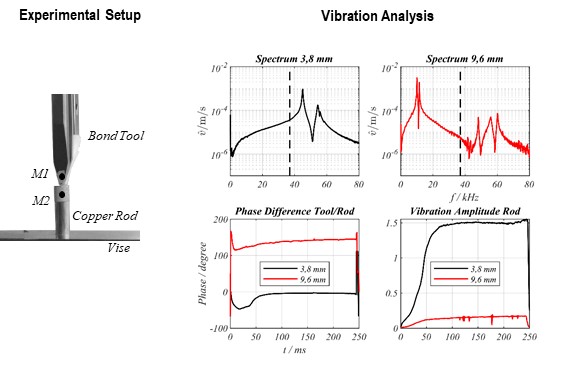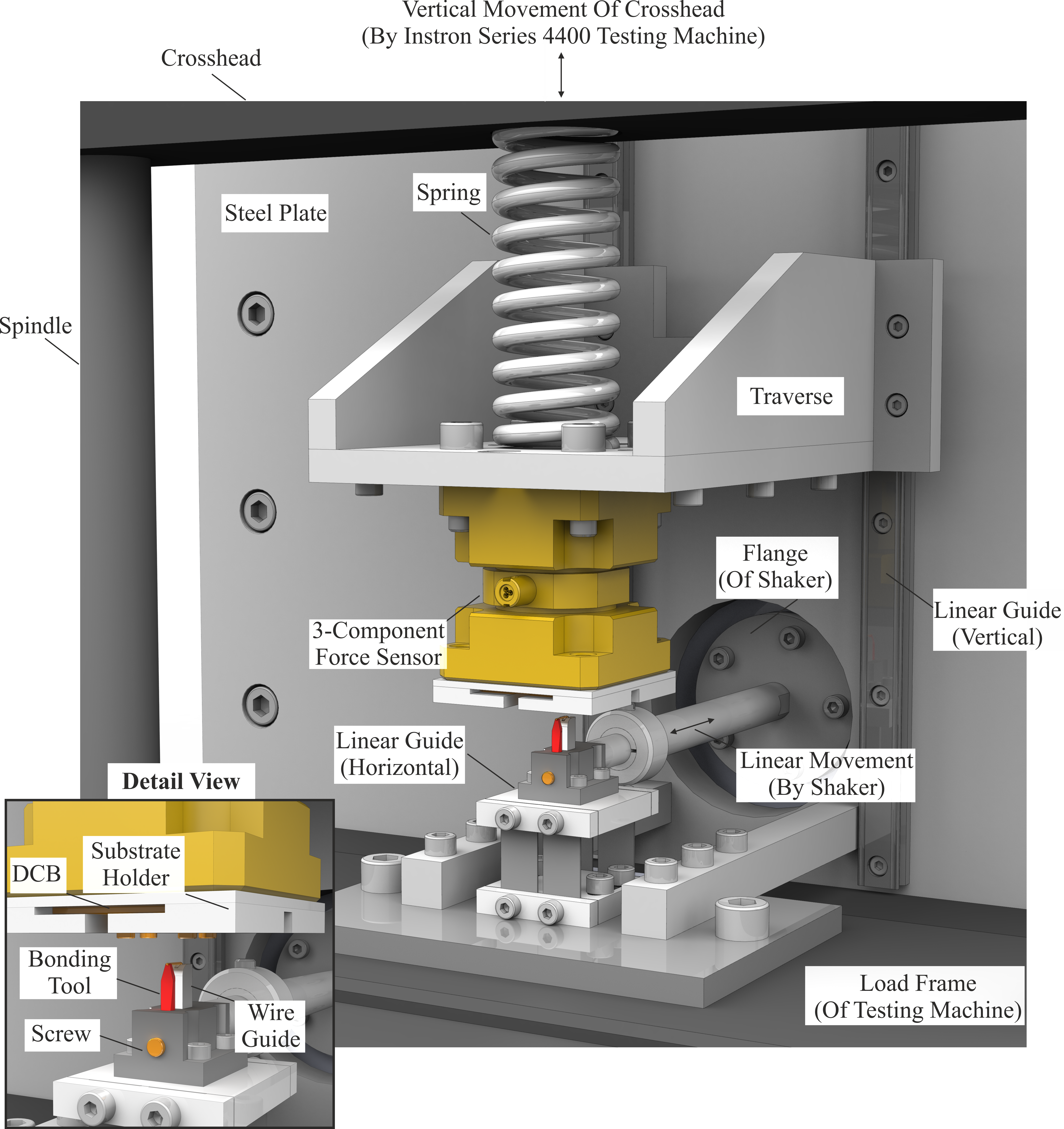Experimental investigations in ultrasonic wire bonding
In addition to the classical methods of experimental design in ultrasonic wire bonding such as Design of Experiment (DoE), the performance of shear and pull tests and the optical evaluation of the bond connection by microscope images, numerous supplementary experiments and measurements to investigate the influence of the bonding process parameters on the connection quality are carried out as part of the research work at the chair:
- Experimental vibration and modal analysis using laser vibrometry,
- Low frequency bond tests (<1 kHz) to measure dynamic process forces and high-speed recordings of the bond process for motion tracking analysis,
- Analysis of the ultrasonic softening effect for the parameterization of simulation models
Experimental vibration and model analysis is an important tool to investigate the influence of substrate vibrations during bonding on the bond quality. In order to avoid damage such as delamination of the substrate or damage to already set joints and to introduce the ultrasonic power into the joining zone as effectively as possible, the vibration excitation of the substrate should be as low as possible. Bonding tests on a copper rod allowed the influence of subsurface resonances on the vibration behavior during bonding to be investigated. It turned out that "over-resonant" bonding is advantageous to reduce background vibrations.
In addition to vibration analysis during bonding, the measurement of process forces is also of interest for the analysis of the bond formation. The dynamic force measurement at ultrasonic frequencies is associated with a very high effort due to the necessary calibration of the force sensors in this frequency range. For this reason, a test rig for the investigation of the bond phases (PUB) during low-frequency wire bonding was developed at the chair, which is based on a modified tensile-compression testing machine; instead of an ultrasonic transducer an electrodynamic shaker is used. The basic procedures for low-frequency wire bonding are similar to those of conventional US wire bonding; the low excitation frequency allows the measurement of process forces with conventional piezoelectric force sensors, which can be dynamically calibrated for the frequency range up to 20 kHz at the chair. In addition to the measurement of process forces, the test rig is used for high speed recordings, which allows the tracking of process sequences in good resolution.
Publications of the chair on this research area can be found here:



